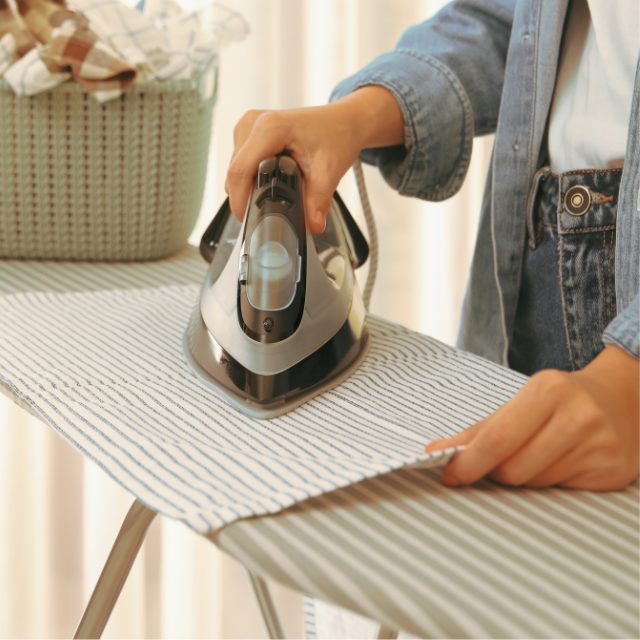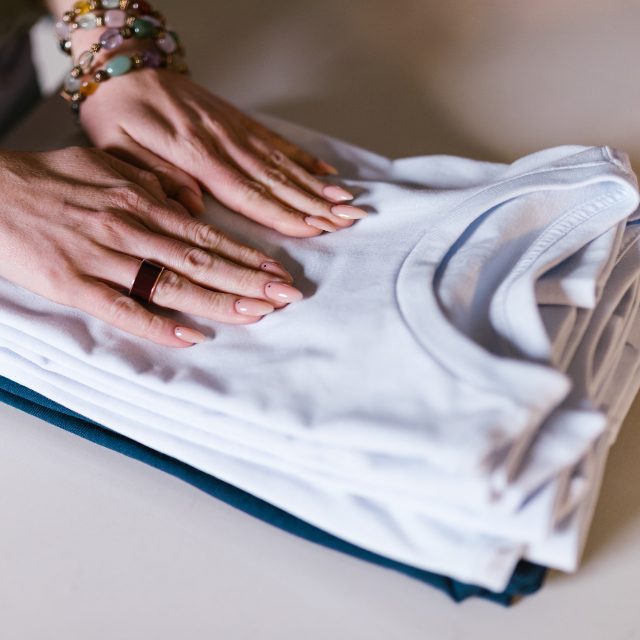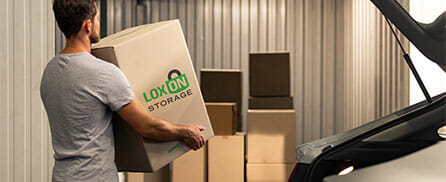Aug 28 2024
How To Store Clothes Long Term in Self-Storage
Ever wondered where to store all the extra clothes in your closet? Stop stuffing your wardrobe drawers, closet shelves and under-bed storage boxes full to the brim and consider investing in affordable storage solutions to tidy up your home. Whether you are renting a smaller space, downsizing, heading off on a trip, or simply after some extra space to clean up the closet clutter, self-storage is a smart solution.
Storing your clothes long-term in self-storage is a simple way to keep your clothes preserved for extended periods of time. However, it is important to pack your clothes for storage the right way to avoid potential damage from moisture, pests and wrinkles.
At Loxon Storage, we have decades of experience in packing clothes for storage and have detailed below our top tips and methods for keeping your clothes in pristine condition while they are in a storage unit.

Step One: Sort & Organise Clothes For Storage
Before jumping into packing a pile of clothes away into storage, it is important to do a stocktake of your closet and determine which items you need to store and organise them by category, season, material or use. We recommend choosing a storage system that works based on your lifestyle and needs. Some popular clothing storage systems include:
Seasonal Clothes Storage System: This is a more involved storage methodology and involves dividing your wardrobe into the seasons of spring, summer, autumn and winter whilst keeping your must-have everyday essentials. Based on this, you can rotate the clothes in your closet in accordance with the seasons and place off-season pieces straight into self-storage!
Special Occasion Storage System: This clothing storage solution involves dividing your clothes into everyday wear and special occasion piles. Then place all special occasion clothing that you do not wear regularly into self-storage to clear the clutter in your closet.

Step Two: Clean & Dry Clothes For Storage
Before packing your clothes for storage, it is important to wash, dry and iron all clothing items. It is recommended to follow washing instructions and dry clean any items where needed prior to storing. This will keep your clothing fresh for longer and extend the wearability of your pieces.
Cleaning your clothes before self-storage can also prevent odours or smells from seeping into your clothing over time. Storing dirty clothes can also stain or damage your clothing long-term.
By drying your clothes entirely before storing them you can also avoid any mould and mildew from building up due to excessive moisture in your clothes. Make sure to double-check if any clothing items are slightly damp and place them out on the washing line, out in the sun or in the dryer to remove remaining moisture!
On top of taking preventative measures for your clothing, be sure to wash and dry any storage containers or boxes you will be using for storing your clothing long-term in self-storage. This will ensure your clothes are safe and ready to wear when you need them.

Step Three: Pack Clothes For Storage
What to pack your clothing in for storage
To keep your clothes in the best condition, it is recommended to pack your clothes in stackable, sealed and air-tight plastic containers with clip-on lids. Then, line each box with cotton sheets. This will keep your clothes dry, stop mould, mildew and dust, as well as keep rodents and pests away from your belongings. For precious items, use layers of acid-free tissue paper between clothes as you fold them. However, it is not recommended to use perfumed linkers, as they may leach chemicals or oils onto your clothing.
It is also recommended to avoid using plastic bags as they can deteriorate over time and trap moisture inside. This can cause fabrics to stain or yellow as well as promote the growth of mildew and mould. Similarly, cardboard boxes cannot protect your clothing adequately from pests and vermin who can chew through the cardboard and damage your items.
Vacuum-sealed plastic bags are also not recommended for long-term storage. Whilst a great short-term solution, in the long run, the vacuum seal can cause the fibres in your clothing to compress causing it to ruin the shape, structure or fit of your clothes.
Once you have packed your clothing into a plastic-sealed container, use cedar balls to prevent mildew and musty odours that often occur when clothes spend a long time in storage.
How to fold your clothes for storage
When packing your clothes for storage, it is recommended to pack your clothing with purpose and intent. For items such as shirts, sweaters and jeans, lay the garment flat and fold the sleeves or sides inward, then in half or thirds.
This method reduces the number of folds in your clothing to minimise creasing. For delicate fabrics like silk, place a piece of acid-free tissue paper between each fold to reduce friction, prevent sharp creases and protect the fabric from damage.
An alternative method is the rolling technique. This is good for items prone to wrinkling like cotton or linen clothing and aims to maximise the space in your storage box. To do this, simply lay your clothing item out flat, fold in the sides and roll from one end of the garment to the other.
How to layer your clothes for storage
Once you have decided on your folding technique, it is time to consider the order in which you will pack your clothing for storage. It is recommended to place heavier and less wrinkle-prone items such as jeans, denim jackets or sweaters at the bottom of the box whilst delicate and lighter clothing items should be placed on top. Depending on the size of the storage box, use garment dividers between layers of clothing to prevent them from pressing together and wrinkling over time.
Once packed, remember to leave space at the top of the box. This will allow enough room for the lid to shut easily and can prevent clothes from being squished together. As overpacking can lead to more creasing and damage to fabrics in the long run.

Step Four: Label Clothes Boxes For Storage
Once all clothing has been packed appropriately, label each box and detail what it contains for easy retrieval and access once they are stacked in your storage unit. It is recommended to use large stickers and permanent markets to clearly label storage boxes with big bold letters. A colour-coding system can also work well here. This can help you find the box you need from afar in your storage unit!
Creating an inventory list of all clothing items packed and where they are in your storage unit is also a great option for those who may need to regularly access their storage unit and pull clothing items for particular occasions.

Step Five: Store Clothes In A Self-Storage Unit
Choosing where to store your clothes long-term
After all clothing has been cleaned, organised, packed, sealed and labelled, it is time to move everything into a storage unit! It is important to find a storage facility that offers clean, convenient and dry storage spaces that are big enough to fit all your boxes.
At Loxon Storage, we offer a variety of affordable storage units across Australia, so you can always find the right storage unit in a location convenient to you! Simply use our location finder to identify your nearest Loxon Storage location and request a free online quote today.
Planning how to store your clothes in self-storage
Once you have booked a storage unit, it is time to plan the layout for easy access. We recommend drawing the desired layout using a pen and paper or an editing tool such as Canva. Use this sketch to decide where larger boxes will be placed and make sure to leave clear paths for access. You can even designate specific areas for different categories such as formal wear, winter clothing, summer clothing and more.
Consider placing your stored clothing in the centre of your unit and leaving space around the walls to create pathways and prevent your items from any unexpected damage.
Moving into your storage unit
Begin moving in by placing the heaviest boxes at the bottom of your stack with the label or colour-coding facing towards the entrance so you can clearly see what items are stored where.
Having a foundational layer of heavy items will provide stability to your clothes storage layout and prevent lighter items from being crushed. As you build your storage stack upwards, gradually move to lighter boxes at the top to prevent damage to delicate or easily crushable items. If you anticipate needing to access certain items sooner, place these at the top of each stack or near the front of your storage unit.
Leave enough space between stacks of boxes or along the walls to create aisles. This will allow you to navigate your storage space with ease and without having to move multiple boxes each visit.

Step Six: Check In On Your Stored Clothes
Where feasible, it is recommended to visit your storage unit periodically. This can ensure your clothes remain in good condition and any unexpected damages can be addressed immediately. If possible, rotate your stored clothes or take some boxes home regularly to air out the clothes and prevent mustiness over time.
And there you have it! Our comprehensive guide on how to store clothing long-term in a self-storage unit. If you have any questions or want to hear more from our storage experts about our storage units, please contact us today.




